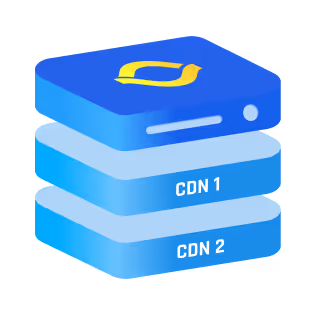You build a website, put in the hours, and finally hit publish. But then someone across the world tries to load it… and it crawls. That’s the part nobody tells you—building something online is one thing, delivering it fast to everyone is another.
That’s where you subscribe to a public CDN. It’s like giving your content a shortcut—no matter where your visitors are, they get a fast, smooth experience. And the best part? You don’t have to set up expensive infrastructure to pull it off.
What Is a Public CDN?
A public CDN is a content delivery network that’s open to general users—often free or low-cost—designed to help websites load faster by distributing content across multiple global servers. Think of it like putting your website’s files in several convenient “pickup points” around the world.
So when someone tries to access your content, they don’t have to reach all the way to your origin server. Instead, they grab it from a location closer to them.
Services like Cloudflare, jsDelivr, and Google Hosted Libraries are examples of public CDNs. They’re made to help developers and site owners serve public content (like images, CSS files, or JavaScript libraries) faster and more efficiently.
Why Would You Use a Public CDN?
Here’s the deal—if you’re running a small blog, startup site, or even a side project, you probably don’t want to spend hundreds on infrastructure. That’s where a free CDN comes in clutch.
Using a public CDN means:
- You can load common libraries (like jQuery or Bootstrap) without hosting them yourself.
- Your static content (and dynamic content) is cached around the world.
- You get better performance without needing a dedicated team or expensive setup.
It’s kind of like hitching a ride on a shared highway instead of building your own private road.
{{cool-component}}
Public CDN vs Private CDN
Now here’s a question you might be thinking: “What’s the difference between a public CDN and a private one?”
Public CDN:
- Shared by many users.
- Great for serving public content like JS libraries or images that everyone can access.
- Often free or low-cost.
- You get what they give—no advanced customizations.
Private CDN:
- Built just for you (or your company).
- Meant for sensitive or high-priority content that shouldn’t be public.
- Offers deeper control over caching rules, routing, security, etc.
- Comes with a higher price tag.
If you’re running a large platform with millions of users or proprietary content, a private CDN might make more sense. But if you're serving static assets, loading scripts, or just trying to boost your website speed on a budget, a public CDN does the job really well.
This is where the content delivery network comparison gets interesting. You’re trading control and privacy (private CDN) for cost-efficiency and simplicity (public CDN).
How Public CDNs Help with Speed
Speed isn’t just a nice-to-have anymore—it affects everything from user experience to SEO. With a cdn public utility, your content is delivered from edge servers located around the globe. That means:
- Faster load times
- Reduced strain on your origin server
- Better handling of traffic spikes
Even better? If you’re using widely-used assets like jQuery from a public CDN, there's a good chance your visitor already has that file cached in their browser from another site. That’s instant load—no wait time at all.
Real-Life Examples of Public CDNs
Let’s talk about a few situations where using a public CDN makes total sense:
1. Hosting JavaScript Libraries
Instead of uploading jQuery or React to your own server, you use the Google Hosted Libraries CDN. Your site loads faster, and so does everyone else’s who’s using the same file.
2. Image Hosting with CDN
If you’ve got a portfolio, blog, or eCommerce store with lots of images, platforms like Cloudinary’s free CDN tier or Imgix let you serve those images through a public CDN with optimization features.
3. Delivering Open Source Files
Running a developer-facing site? jsDelivr is a great option. It fetches files from GitHub, npm, or WordPress and serves them directly through a public CDN.
{{cool-component}}
When Not to Use a Public CDN
Okay, so public CDNs sound great. But are they always the right choice?
Here are a few times you might want to think twice:
- You’re delivering sensitive or private content.
- You need full control over headers, security, or performance settings.
- You need guaranteed availability with SLA-backed uptime (most free CDNs don’t come with guarantees).
In these cases, going with a private CDN or a hybrid setup might be the safer bet. You’ll pay more, but you’ll also get more control and reliability.
Common Myths About Public CDNs
Let’s clear up some confusion:
Myth: “Public CDNs are slow because they’re shared.” Not true. In fact, the biggest public CDNs have massive infrastructures and perform better than some private setups.
Myth: “You can’t trust free CDNs.” While you shouldn’t rely on anything blindly, most popular free CDNs are backed by huge companies and have strong reliability.
Myth: “You need to be a developer to use one.” Nope. Most of them are as simple as copy-pasting a script or uploading files.
How to Start Using a Public CDN (In 2 Minutes)
Let’s say you want to use Bootstrap from a public CDN. Here’s all you do:
- Go to https://cdnjs.com/
- Search for “Bootstrap”
- Copy the <link> tag
- Paste it into your HTML
That’s it. Your site now loads Bootstrap from a globally distributed CDN instead of your local server.
The same applies to images, fonts, videos—whatever static content you’ve got.
Public CDN vs Free CDN — Are They the Same Thing?
Here’s where it gets a little confusing—public CDN and free CDN are often used like they mean the same thing. But they’re not always identical.
A public CDN just means the network is open to general users. You don’t need a special account, private server, or exclusive license to use it. Anyone can access it. The content served (like JS files, images, fonts) is usually public content—not locked behind logins or paywalls.
A free CDN, on the other hand, refers to the pricing. It costs you nothing to use. Many public CDNs are free, especially ones offering popular libraries or open-source assets. Think of services like jsDelivr, cdnjs, or UNPKG—they’re both public and free.
But not all public CDNs are free. Some might charge you once you hit a traffic limit, or for extra features like analytics, custom domains, or DDoS protection.
Here’s a quick look at how they compare:
So the short answer?
✅ All free CDNs are (usually) public
❌ But not all public CDNs are free
When in doubt, check their pricing page before you start plugging things into your site.
So, Should You Use a Public CDN?
If you’re building a website, blog, or even a web app—and you're not ready to dive deep into infrastructure stuff—a public CDN is one of the easiest ways to:
- Speed things up
- Reduce hosting load
- Cut down on costs
- Improve user experience
You don’t need to overthink it. Use cdn public utilities for what they’re best at: serving public content reliably and quickly. And if you ever outgrow them, that’s when you look into a private CDN or more advanced options.
{{cool-component}}
Does Using a Public CDN Help with SEO?
Not directly—but yes, it absolutely helps in ways that matter.
Google doesn’t say, “Oh you’re using a CDN? +10 SEO points!”
But it does care about things like page speed, Core Web Vitals, and bounce rate. That’s where a public CDN gives you an edge.
Here’s how:
- It loads your content faster by caching it closer to the visitor.
- It reduces load on your server, which keeps things snappy even during traffic spikes.
- It often results in faster First Contentful Paint (FCP) and Largest Contentful Paint (LCP) scores—two key speed metrics Google tracks.
And that’s not all—if you’re using a cdn public utility like cdnjs for common libraries, some users may already have those files cached in their browser. That makes your site feel instant. Which means people stick around longer. Which means lower bounce rates.
So no, a public CDN isn’t a magic SEO cheat code. But it definitely helps build the kind of experience search engines (and users) love.
Conclusion
Public CDNs are like free, global speed boosters for your content. They help your stuff load faster without costing a dime. Perfect for static files, open source libraries, or any public-facing asset you want to deliver quickly.
Keep it simple, use them wisely, and let them do the heavy lifting while you focus on building cool things.



.png)
.png)
.png)






